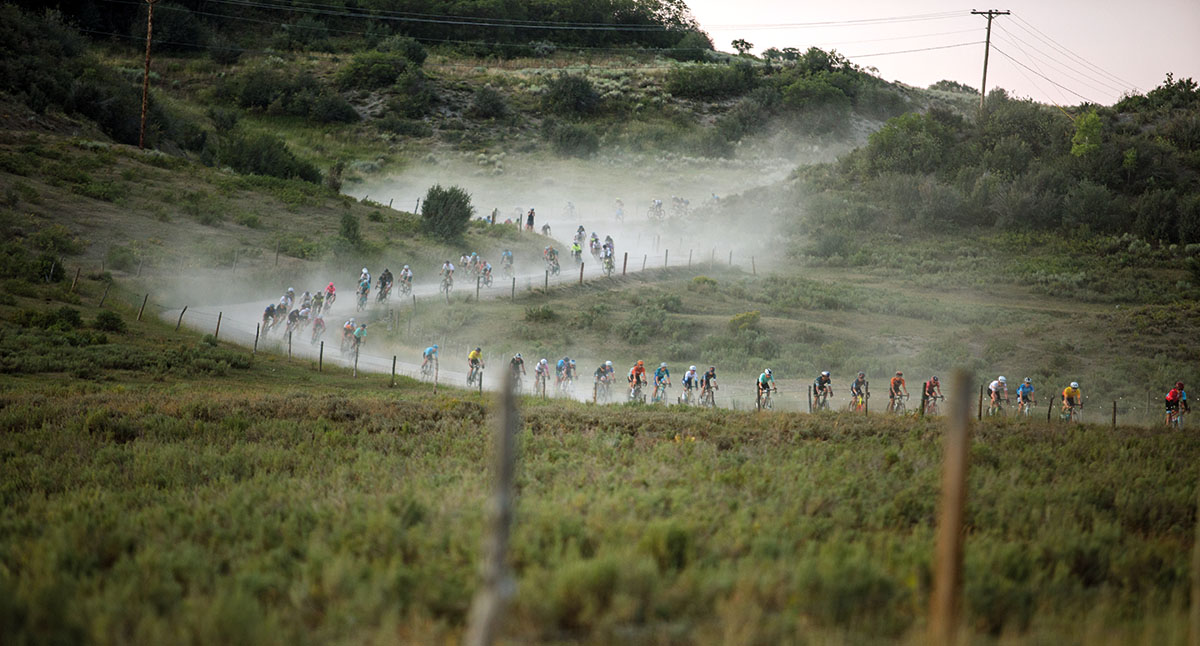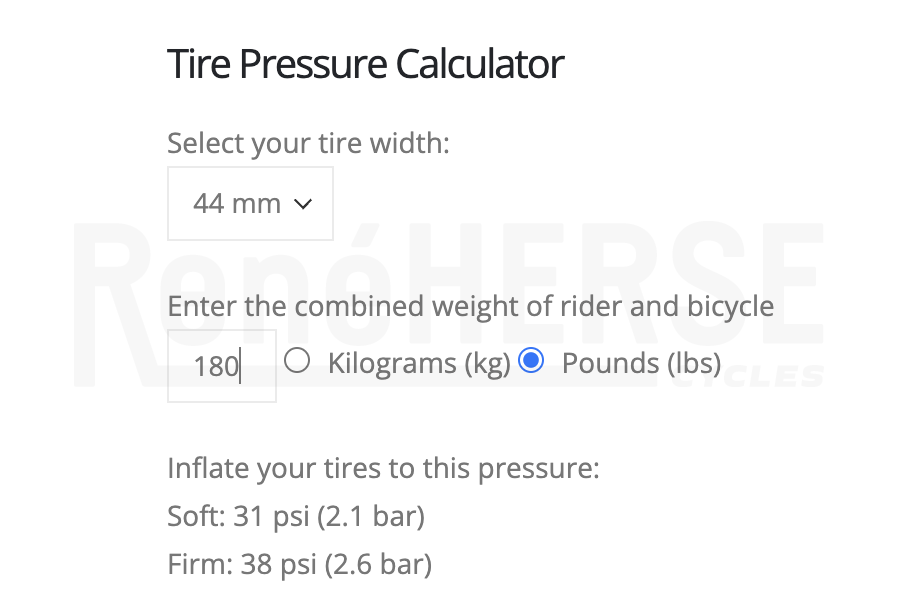The Scientific Guide to Choosing Gravel Tires
As riders prepare for rides and races in 2024, they also wonder what tires to run. How do you choose the right width, tread pattern, casing, pressure, etc.? It can seem overwhelming, but in reality it’s simpler than you might think. We’ve distilled the science down to five points. With this information, you can make informed choices based on your riding style, terrain and preferences. That’s what this guide is about.
We’ve been testing tires under real-world conditions longer than just about anybody else. With two PhDs between us here on the Rene Herse team, you could say that science is in our blood. When we started our research in 2006, road racers were on 20 or 23 mm tires and inflated them to 125 psi (9 bar) or more. Gravel racers were still debating whether 25 mm or 28 mm tires were fastest on gravel. It’s hard to believe today, but that was the accepted wisdom when we started researching tire performance.
At first, our test results—25 and 28 mm tires are faster on smooth pavement than narrower rubber; gravel tires should be much wider than 28 mm; ultra-high pressures don’t roll faster—were met with disbelief. This went against everything we thought we ‘knew.’
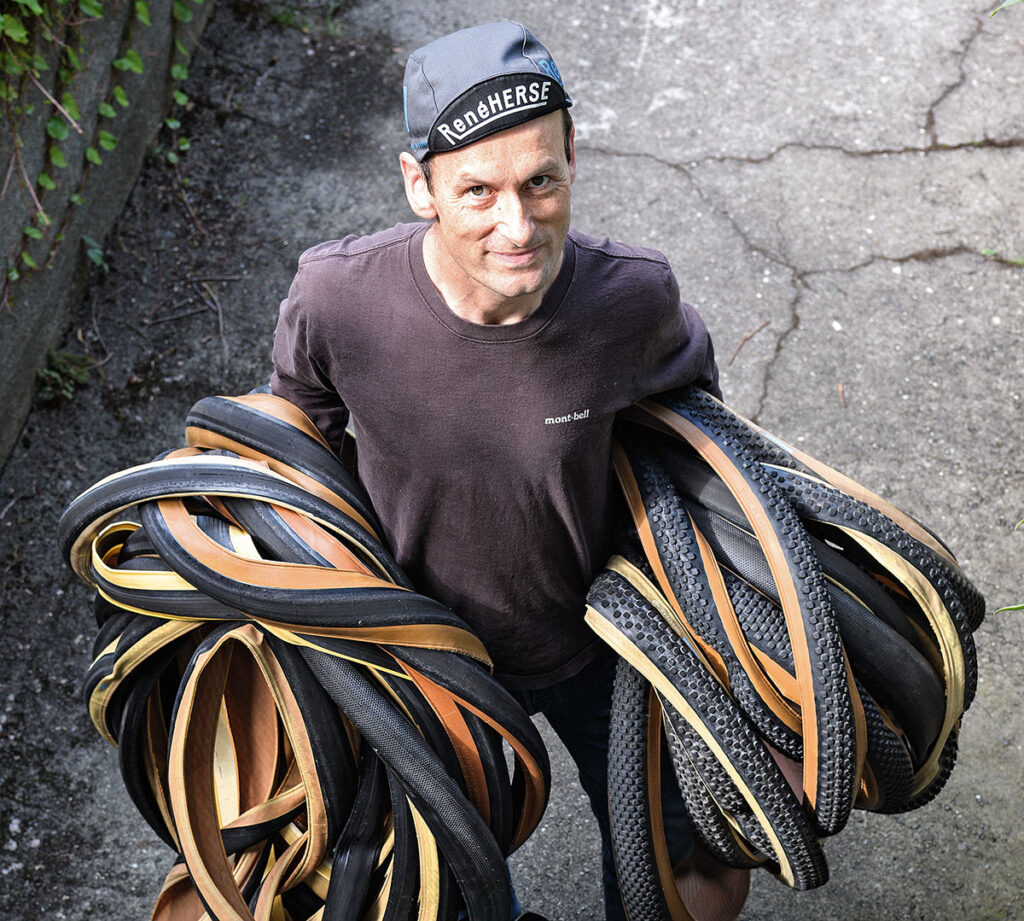
Today, these results are widely accepted. Pro road racers now ride tires as wide as the ‘gravel grinders’ back then. Modern gravel bikes have clearance for at least 45 mm tires. We’ve come a long way, and Rene Herse Cycles is proud to have been at the forefront of this revolution since the beginning.
Testing alone can’t tell you everything. That’s why we work with top racers like Ted King, Lauren de Crescenzo, Brennan Wertz and Lael Wilcox when we develop our tires. To complement the science in this post, we’ve asked them how they choose their tires for gravel races.
Before we go into the details, here’s a quick summary:
- Start with the widest tire that fits your bike.
- Use the most supple casing you can get away with, given the terrain and your riding style.
- Don’t worry much about tread pattern. When in doubt, choose a dual-purpose knobby.
- Adjust tire pressure to fine-tune how your bike feels. When in doubt, run lower pressures.
- Think in terms of bike handling and feel, not speed, when choosing your wheel size.
- Choose tires that give you confidence. During the race, you don’t want to think about your tires, but focus on your ride.
Some of the above is a bit different from common advice about gravel tires. Even though the basics of our research are now widely accepted, there are still a lot of myths out there.
After hundreds of tests with different methodologies, there isn’t much doubt about the science any longer. The riders who work with us have won races and set FKTs, showing that all this really works in the field, too—and not just in carefully controlled tests.
Let’s look at these factors one by one:
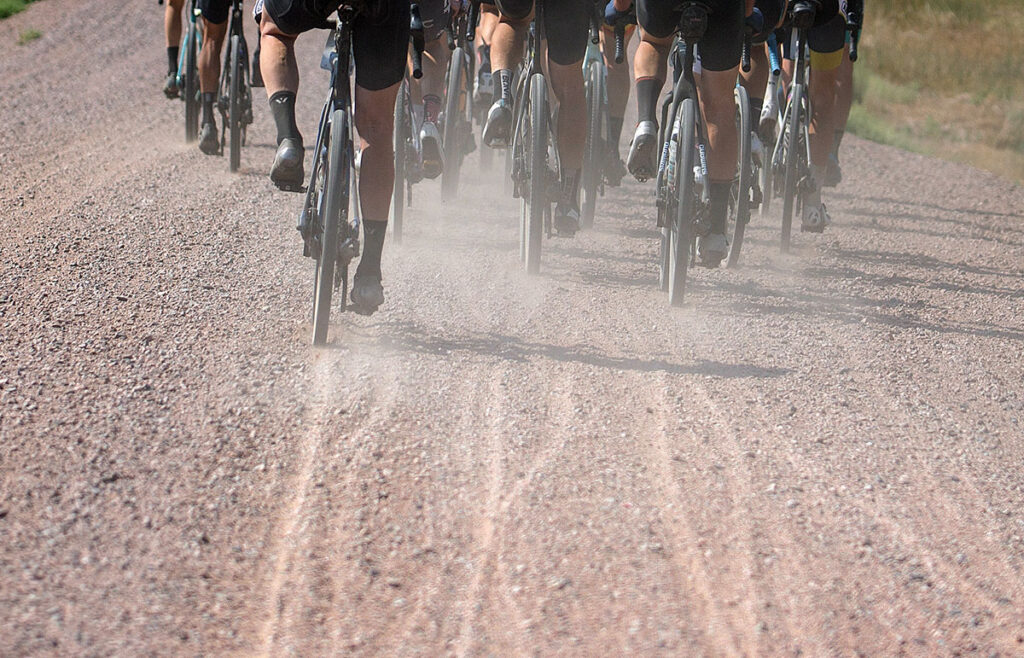
Tire Width
That’s probably the biggest question riders have when choosing their tires for an event. You’ve probably heard somebody say: “I don’t want to run too much tire for that course.” There’s still a misconception that the fastest tire is the narrowest one you can get away with. On smooth gravel, some riders can ride 32 mm tires, but this doesn’t mean that narrow tires are the best choice.
Once you know that vibrations cause suspension losses, you realize that vibrations actually consume power and slow you down. Wider tires can run at lower pressures, which means they transmit fewer vibrations. That makes them faster on all but the smoothest surfaces. Even on smooth surfaces, wide tires aren’t slower than narrow rubber. (More about that is in the links at the bottom of this article.) In other words: When in doubt, run wider tires. They are probably going to make you faster, and they won’t make you slower.
Another factor is flotation: If your bike sinks into the road surface, displacing that material takes energy. There is no free energy: Energy lost anywhere in the system slows down your bike. How much energy is lost when tires sink into gravel? Quite a bit: You’ve probably seen the runaway truck ramps on mountain passes. They use loose gravel to stop semi-trucks that are careening out of control after their brakes fail. A 50-ton truck barreling downhill at 60+ mph has a lot of momentum, and yet the ramps aren’t very long. You lose a lot of energy very quickly if your tires sink deep into loose gravel.
The wider your tires, the less gravel they displace, and the faster they roll over loose surfaces. Ideally, your tires leave no tracks in the gravel. If you are gouging a deep furrow, you are moving a lot of material—and losing a lot of speed.
Grip is as important as speed. Wider tires at lower pressure conform better to the road surface, which greatly improves your grip (and confidence).
Many racers worry about the wind resistance of wide tires. The aero penalty is much smaller than most people believe. We’ve tested this in the wind tunnel and in roll-down tests: Even a 6 mm wider tire does not increase wind resistance significantly. As long as you tire is narrower than your bike’s down tube, there’s no reason to worry about wind resistance. (You can read more about aero on gravel bikes in the links at the end of this article.)
The weight penalty of wide tires is small compared to the benefits in speed and grip/traction. If you’re worried that wider tires won’t spin up as fast, you can always run smaller wheels.
That’s the science, but there are reasons why some racers choose relatively narrow tires. We’ll get to those later.
Summary: Wider is better from the simple perspective of reducing resistances to a minimum.
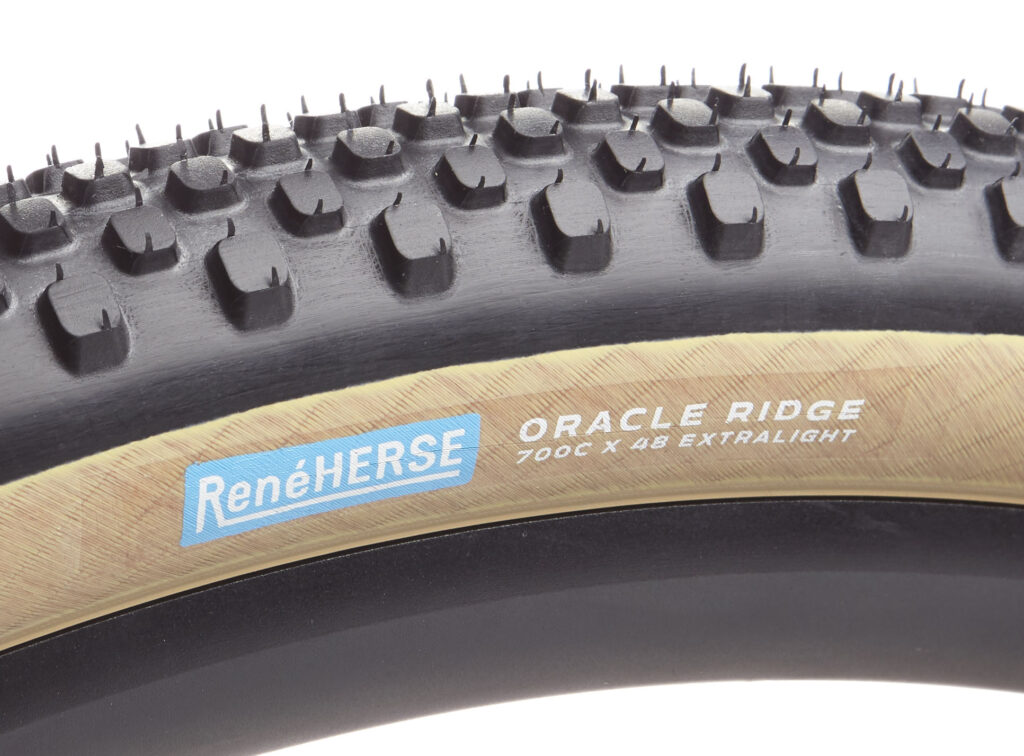
Casing
The biggest factor for tire speed is the suppleness of the casing. This is something many big tire companies don’t like to talk about, because supple casings are expensive. Supple casings are made from fine, high-quality threads, and those cost a lot more than coarse fabrics—and they need to be handled with much more care. Many big factories aren’t equipped to handle these delicate raw materials. (In the finished tire, the threads are encased in rubber and much less fragile.)
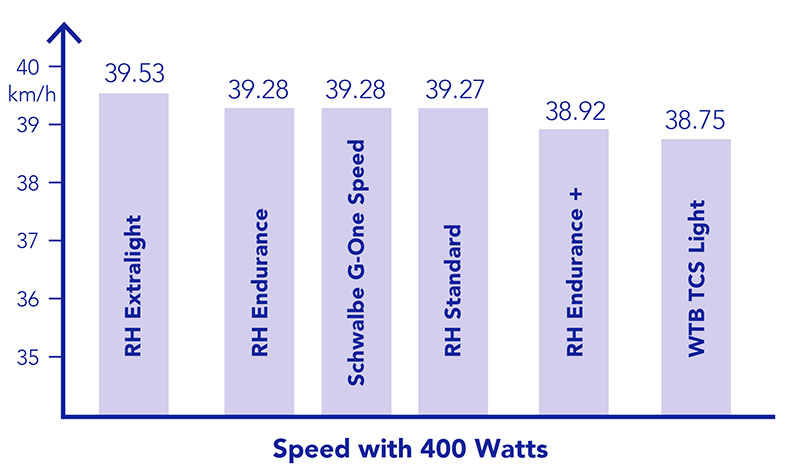
The graph above is based on our real-road testing of various tires. Between the fastest and slowest of these gravel tires, you’re seeing a difference of 0.78 km/h (0.5 mph)—with the same power output. That’s huge! Over the 200-mile Unbound, that translates to 15 minutes for the fastest riders, and even more for slower ones.
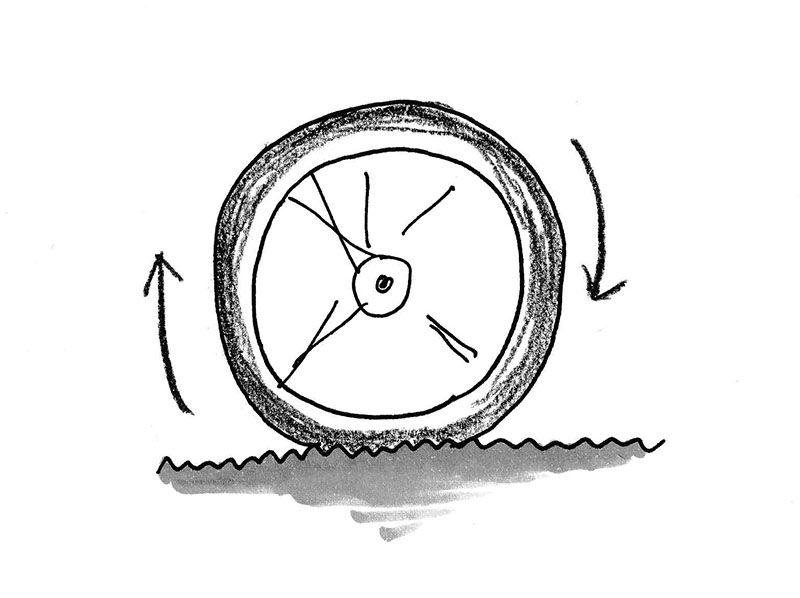
Here’s why supple casings roll so much faster:
- Supple tires require less energy to flex. As the tire rolls, it flattens at the bottom. Flexing the tire requires energy—think squeezing a tennis ball. With a supple casing, you’re not squeezing a tennis ball, but a foam ball. Much easier.
- Supple tires transmit fewer vibrations. This reduces the suspension losses—less energy lost, more speed..
- Less vibration also means more comfort, leaving the rider fresher and better able to maintain a high power output.
- Supple casings offer better traction, since they conform more closely to the ground surface.
That makes supple tires a win-win-win-win situation—with one caveat: Supple casings also tend to be somewhat more fragile. There’s a way around that: Use high-end materials that are strong, yet supple. Rene Herse Endurance casings use the same ultra-fine threads as our Extralights, but the threads are pushed closer together to create a denser, stronger weave. Underneath is a high-tech, cut-resistant layer from bead to bead. Our Endurance tires roll as fast as the fastest casings from big makers, yet offer better puncture resistance. (Our small company has very low overhead, so we can use costly materials without making our tires prohibitively expensive.)
Generally, we recommend the Endurance casing for most gravel racing. As Ted King put it, “To win, you first have to finish.” When you’re riding in a big pack, you can’t see where you’re going, and you’ll hit big rocks. We’re proud to say that our Endurance tires have an excellent track record at Unbound. Just ask Ted, Lauren or Lael—none of them have had any flats in many runs over the sharp rocks of the Flint Hills of Kansas. (Of course, there is also an element of luck, and we can’t guarantee you won’t flat on Rene Herse tires.)
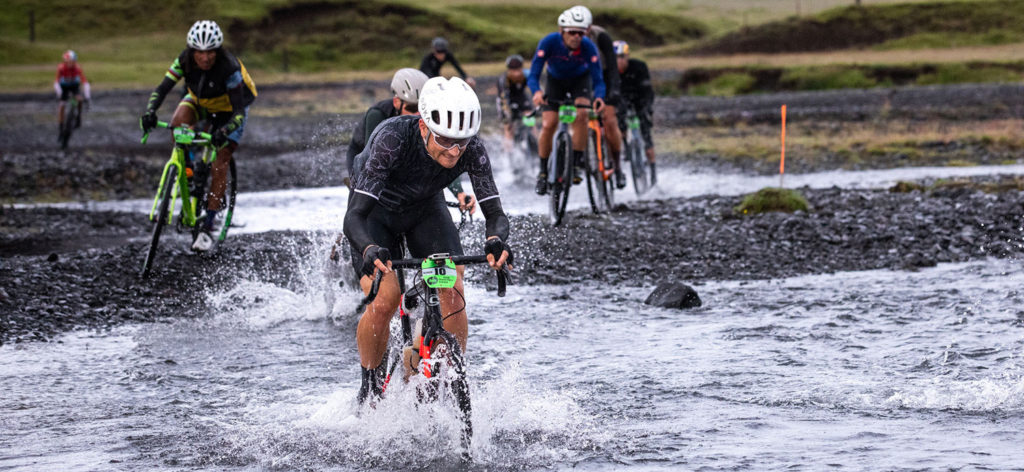
The Endurance Plus casing is even tougher. It’s ideal for riders who tend to be hard on their tires, and for truly rough races, like The Rift in Iceland with its sharp volcanic rocks and many water crossings where you can’t see what your tires are rolling over.
For rides in small groups and solo time trials, where you can pick the best line, the Extralight casing offers amazing speed. It’s not a good choice for riders who tend to have lots of flats, but I’ve ridden and raced on Extralights for over a decade now, without problems.
Everybody’s style (and weight) is different, and it also depends on the terrain, of course. Generally, the wider your tires, the lower your pressure, and the less likely you are to damage a tire. Which means you can run more supple casings.
Summary: Supple casings make the biggest difference in speed, but there’s a trade-off in durability. High-end casings are more durable and faster than less expensive casings.
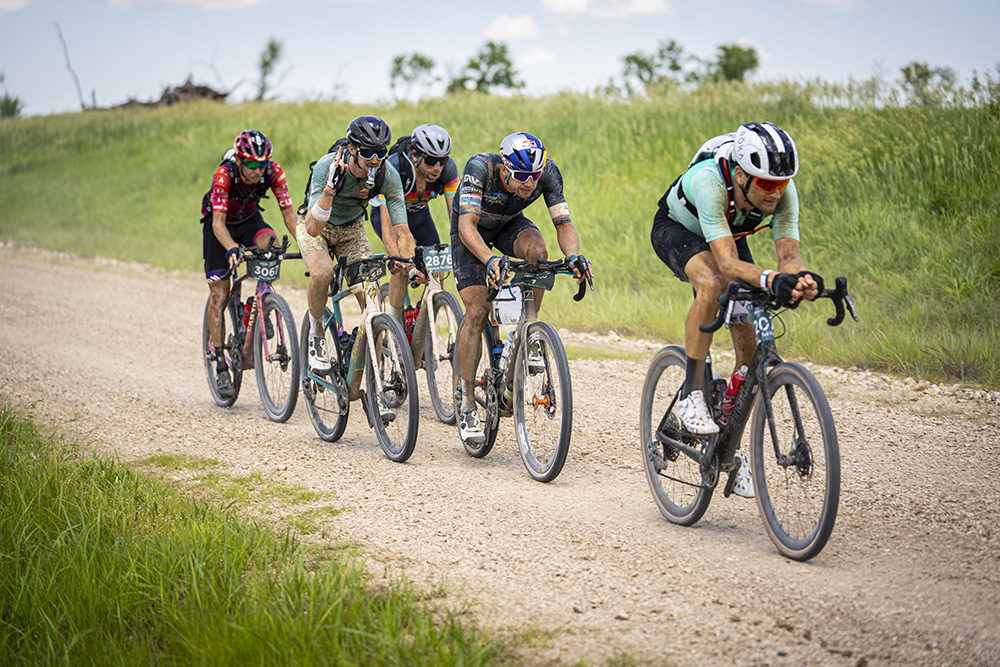
Tread pattern
Tire treads are easy to see, and riders tend to focus on them. Many tire companies offer a large variety of tread patterns for every imaginable condition. It’s an easy way to sell more tires. Do we really need bring a quiver of tires to each event, so we can change if last year’s hardpack has been replaced by a new spread of loose gravel, or if it rains and there might be mud?
Rene Herse would also love to sell you multiple sets of tires, but the honest answer is: On most gravel surfaces, tread makes very little difference. Your bike slides because surface rocks slide on the rocks below them. The grip of your tires on the uppermost rock layer makes little difference. Ever since Ted King (above at Unbound) and Lauren de Crescenzo started racing on Rene Herse slicks, this knowledge have been gaining some traction (pun intended). To get more grip, run wider tires that have a larger contact patch.
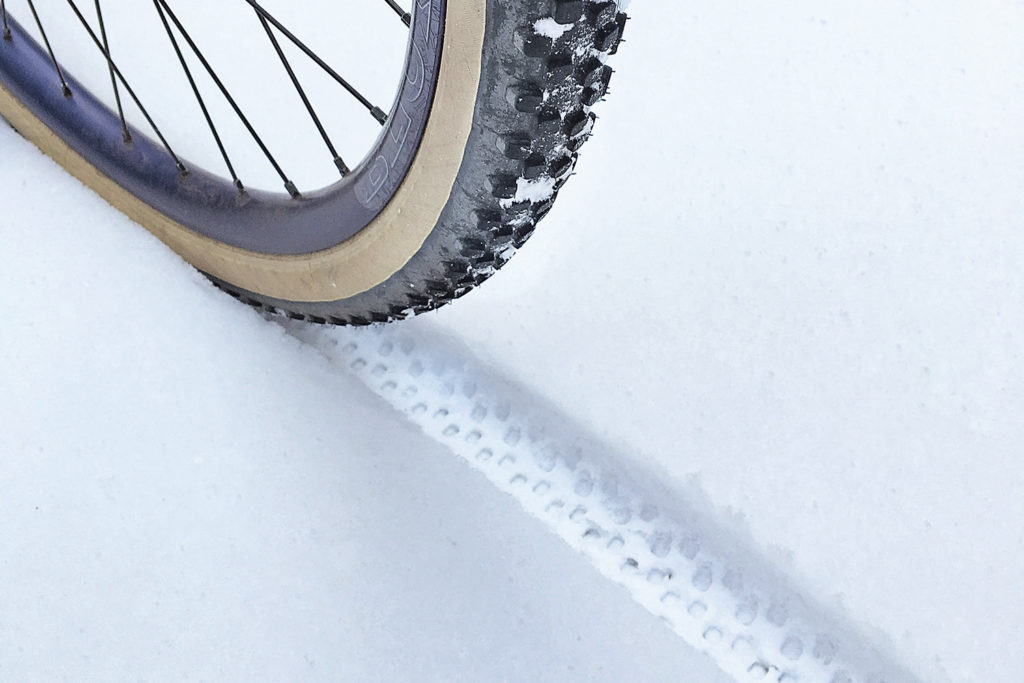
Knobs work when they have something to push against. In mud and snow, knobbies greatly improve traction. As a rule of thumb, knobs work when the imprint of the tire tread is visible on the road surface (above). To work well, knobs need to be spaced far apart, so the tire doesn’t clog up with mud or snow. High speed also helps with self-cleaning the tread, as it increases the centrifugal force that pulls the mud away from the tire.
Many gravel tires have very small knobs. Intuitively, that may make sense—you don’t want ‘too much tire’—but that’s not how it works: Small knobs squirm and flex more, so they are actually slower than large knobs. And small knobs are usually too densely spaced to improve traction on loose surfaces.
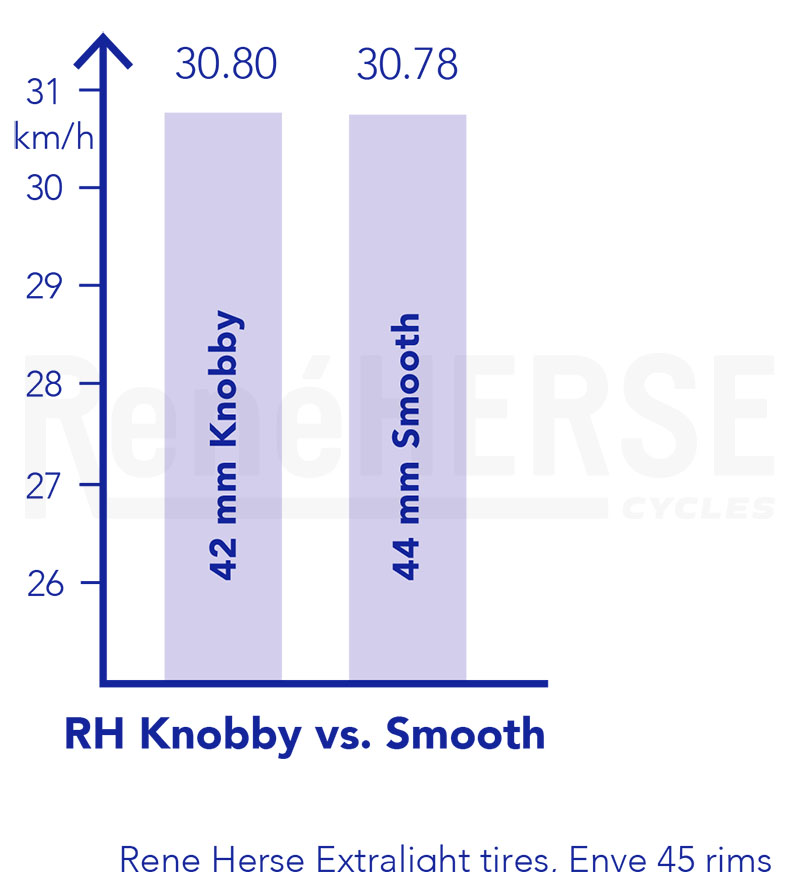
To make a fast knobby, you need large knobs that don’t flex even under high forces. That’s the secret behind Rene Herse dual-purpose knobbies—their knobs are computer-optimized to roll and corner like slicks. That really works: Even on pavement and hard surfaces (above), there is no measurable difference in speed between our dual-purpose knobbies and our smooth all-road tires.
What about semi-slicks with a smooth center and side knobs for cornering traction? Those don’t offer much benefit, because the side knobs never get into play when you ride on gravel or slippery surfaces. The only place you can lean far enough to ride on the side knobs is on pavement, and that’s where you don’t want them! When you lean into a corner and transition from the smooth center onto the (too-small) side knobs, they fold over and lose traction. If you run knobbies, choose a tire where the entire tread consists of carefully designed knobs that provide traction without slowing you down.
Should you run different tread patterns front-to-rear? Mountain bikers often use a more aggressive tire with knobs on the front, and a relatively smooth tire on the rear. This combination makes sense at low speed in technical terrain, where the front tire turns more sharply and needs more traction. At high speed on gravel, the front wheel remains relatively straight even when cornering, and both tires need equal amounts of grip. On surfaces where knobs do help, you need them on both wheels.
Summary: On dry gravel, tread patterns make no difference in grip. You can run smooth tires, but you also don’t give up any speed if you run Rene Herse dual-purpose knobbies. For rides that may encounter mud or snow, run knobbies with large, widely spaced knobs.
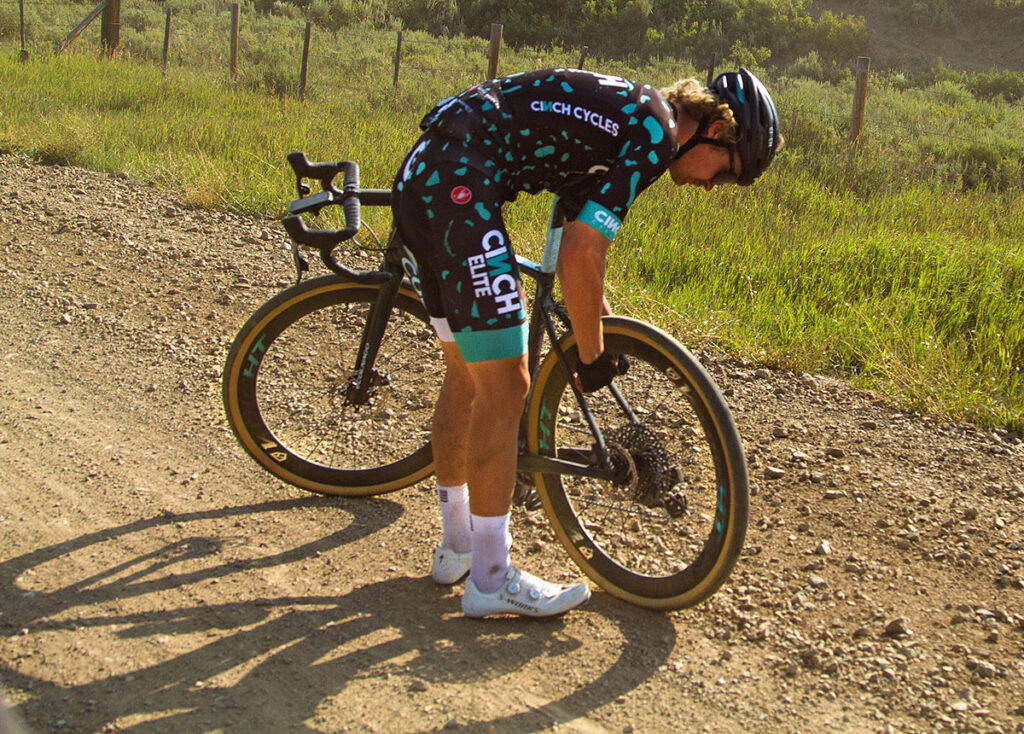
Tire Pressure
Tire pressure is extremely important. It’s one of the easiest factors to change—and one of the most difficult to get right. For many pros, tire pressure is a closely guarded secret, because getting the pressure just right gives them an advantage over the competition.
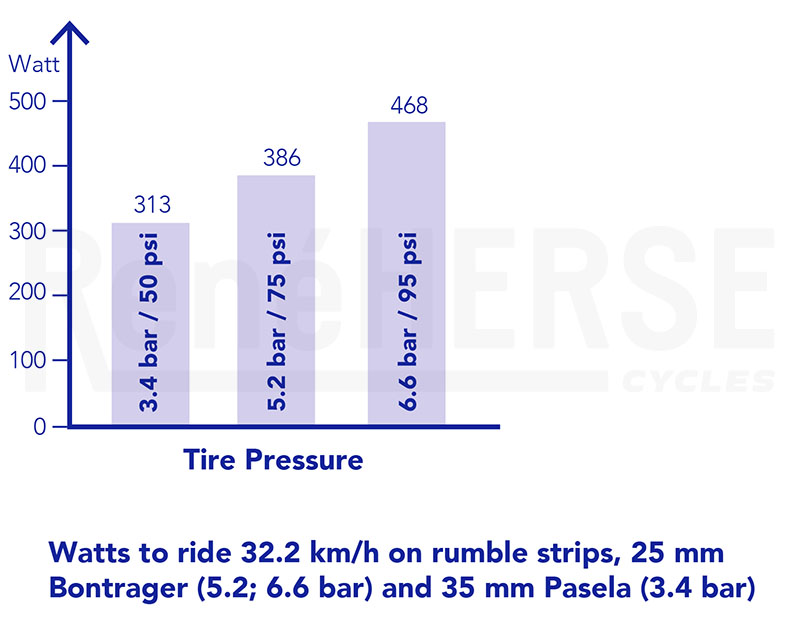
The basic physics are simple enough: On rough roads, lower pressures have less resistance, because they transmit fewer vibrations. It’s as simple as that. The effect is quite significant: On really rough surfaces (rumble strips), too-high pressures can cost you more than 150 watts (above). (We ran these tests before we made our own tires, that’s why you see some very ‘non-racing’ tires.)
Lower pressure also improves traction, because it increases the tire’s contact patch and allows the tread to conform to the surface.
How do you determine your tire pressure? There are many tire pressure calculators, and the recommendations can vary a lot. That’s because most of these calculators are based on ‘educated guesswork,’ as one engineer once put it, rather than actual science. The Rene Herse Tire Pressure Calculator uses data from our real-road rolling resistance measurements and a large study of how tires flex under different rider weights. That means it gives consistent results over the entire range of tire widths and rider weights. (Other factors such as rim width, etc., have only negligible effects, so you don’t need to worry about them.)
The calculator gives you the two tire pressures that result in the lowest rolling resistance. (Why two different pressures? Because the factors of tire flex and vibration are non-linear—details are explained in the pressure calculator’s documentation.)
For gravel, start with the ‘soft’ pressure. From there, experiment with different pressures to see how hard or soft a tire you need on your bike to put down the most power. That’s highly personal and not something any software can calculate.
Stronger riders often do better on with (slightly) higher pressure. If your tires flex excessively during sprints and out-of-the-saddle climbs, it’s hard to put down power. (That’s the same as suspension bob on mountain bikes.) Riders who prefer constant efforts over sprints often can ride lower pressure. Your tire pressure also depends on the terrain: You don’t want to bottom out and risk damaging your tires and rims.
Summary: Lower pressures roll faster on rough terrain, but just as important is the feel of your bike. Tune your tire pressure so your bike works best with your pedal stroke.
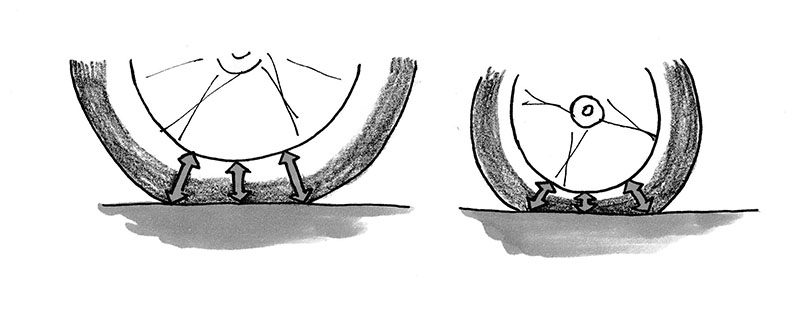
Wheel Size
It seems like a no-brainer: Bigger wheels roll better over road irregularities, don’t they? This would be true if the wheels were solid round discs. But we run pneumatic tires (with air in them) for a reason: They absorb irregularities without lifting the bike. That’s the ‘secret’ of a bicycle’s speed, and that’s why we put up with the hassles of air in our tires in the first place. Basically, a pneumatic tire is flat at the bottom, and its diameter doesn’t matter when it comes to rolling over surface irregularities.
That’s not just theory: Our testing has shown that the most common wheel sizes, 650B and 700C, roll at the same speed over bumpy terrain. We tested this on highway rumble strips. (Rumble strips are grooves cut into the edge of the pavement to alert sleepy drivers who are drifting off the road.) If larger wheels had an advantage, it would show on these rumble strips: During our tests, our bike wheels hit 15 mm (0.6 in) bumps 60 times per second. That’s as extreme as it gets!
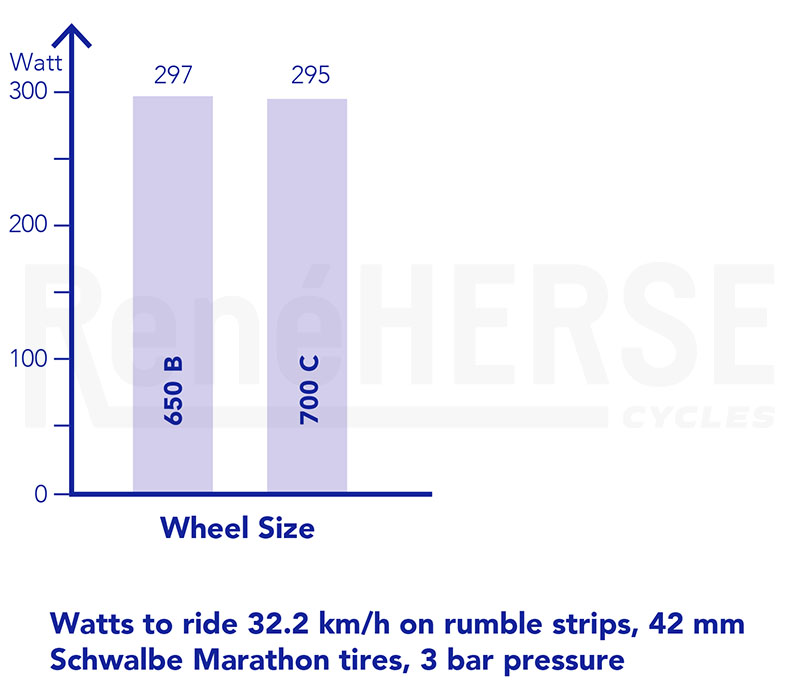
Our testing showed no advantage for the larger wheels. (We ran the same tires and the same pressure for both wheel sizes, of course. The tiny differences in the data above are not statistically significant)
If you’ve got a set of 650B wheels, there’s no reason to ‘upgrade’ to 700C. If you run 700C wheels, that’s great, too. Simply put, wheel size doesn’t matter as far as speed is concerned.
If you’re buying new wheels, choose your wheel size based on the feel you want for your bike. Larger and heavier wheels have more rotational inertia. That means the bike will be more stable and less nimble. If you love the agile feel of a road bike, you may prefer smaller wheels on your gravel bike to make up for the larger and (slightly) heavier tires. If you like a bike that corners like on rails, you’ll be happy with bigger wheels.
Rotational inertia also influences how your bike feels when you ride out of the saddle and rock the bike from side to side. If you find that your gravel bike is hard to move when you climb or sprint out of the saddle, you’ll probably prefer smaller wheels.
Summary: Don’t sweat wheel size. It makes no difference as far as speed is concerned.
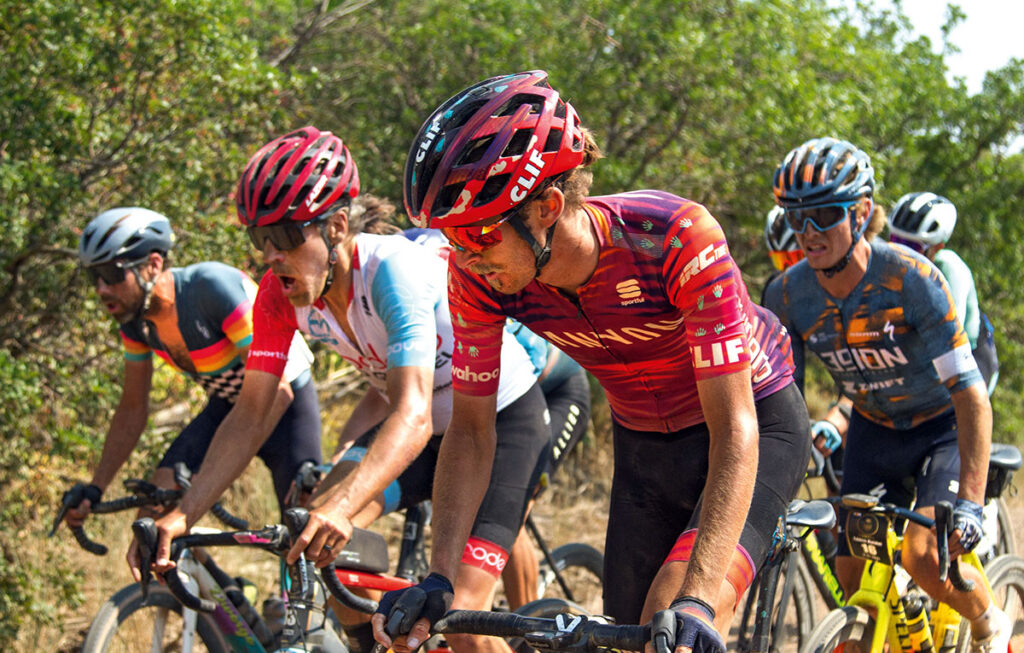
Confidence
All the science in the world doesn’t mean much if you have doubts about your bike. When you are at the limit and digging deep, you need to have full confidence in your equipment. That’s why Ted King’s strategy is simple: “I look at the tires other racers use at an event and go up one size.” That way, Ted doesn’t need to worry that the theory overlooks some crucial factor, and that he’ll be outgunned because he made the wrong tire choice.
If you run Extralight casings and then constantly worry about your tires suffering a sidewall cut, you should choose Endurance casings instead. On the other hand, knowing that you are on faster tires than the riders around you can give you the confidence you need to dig deep and stay with a group, or even attack. That’s something only you can decide!
Summary: More than anything else, make sure you are comfortable with your tire choice.
How does all this work in practice? Let’s look at three examples:
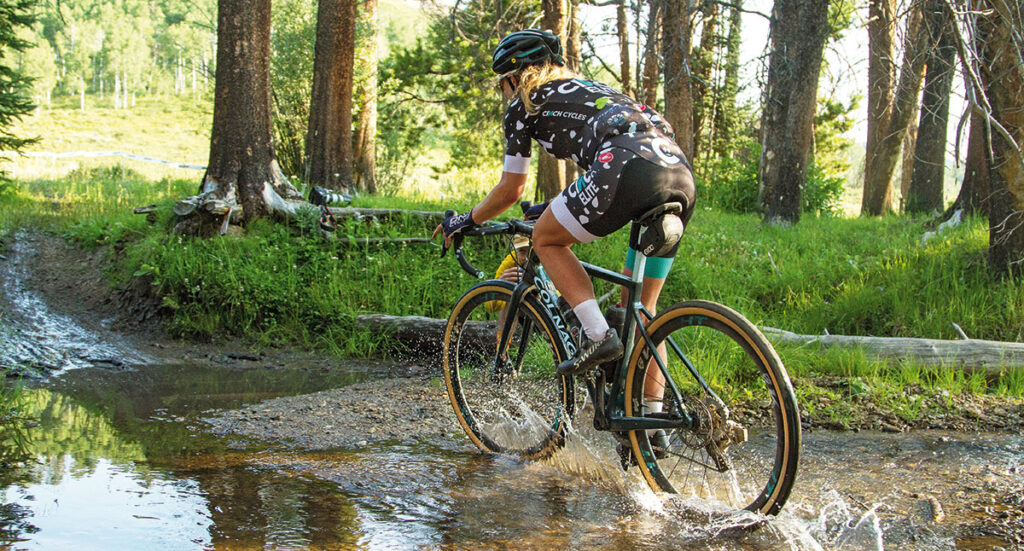
Lauren de Crescenzo at SBT GRVL
In 2021 and 2022, Lauren de Crescenzo (above) won SBT GRVL on smooth Rene Herse 700C x 44 mm tires. Lauren is a very lightweight rider, and 44 mm is ‘a lot of tire’ for her weight.
In 2021, Lauren ran Extralight casings. She solo-ed off the front. With that style, a really wide tire makes sense: There’s no need to sprint, as Lauren won the race with a constant effort at high, but not ultra-high, power outputs. And since she could pick her own lines, the Extralights gave her extra speed with little extra risk.
Despite all this, Lauren chose Endurance casings the following year—and repeated her win. Why no Extralights this time? The reason was simple: If you have more power than your competition, your main concern is making it to the finish. At that point, you’ll win because of your superior power alone. There’s no need to take any risks.
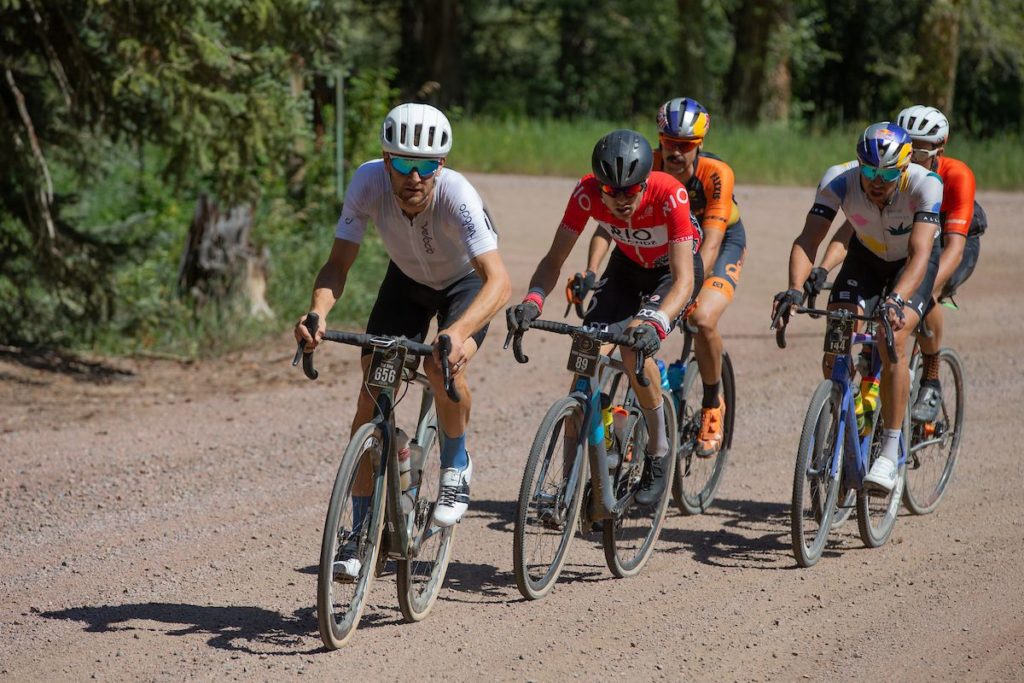
Ted King at SBT GRVL
Ted King also won SBT GRVL, but he was on smooth Rene Herse 700C x 35 mm tires (above, in the lead). Why did Ted run much narrower tires than Lauren, even though he’s a lot taller (and heavier)? The men’s race came down to multiple attacks. The main reason to run 35 mm tires was simple: That was the widest that fit on Ted’s racing bike, and he liked that bike best for these race efforts.
The gravel at Steamboat is relatively smooth, and the 35 mm tires worked just fine for him. Having a relatively firm tire may have been beneficial for such a powerful rider during the all-out attacks that won the race. Ted ran Endurance casings—a good choice if you’re running a tire with minimal width.
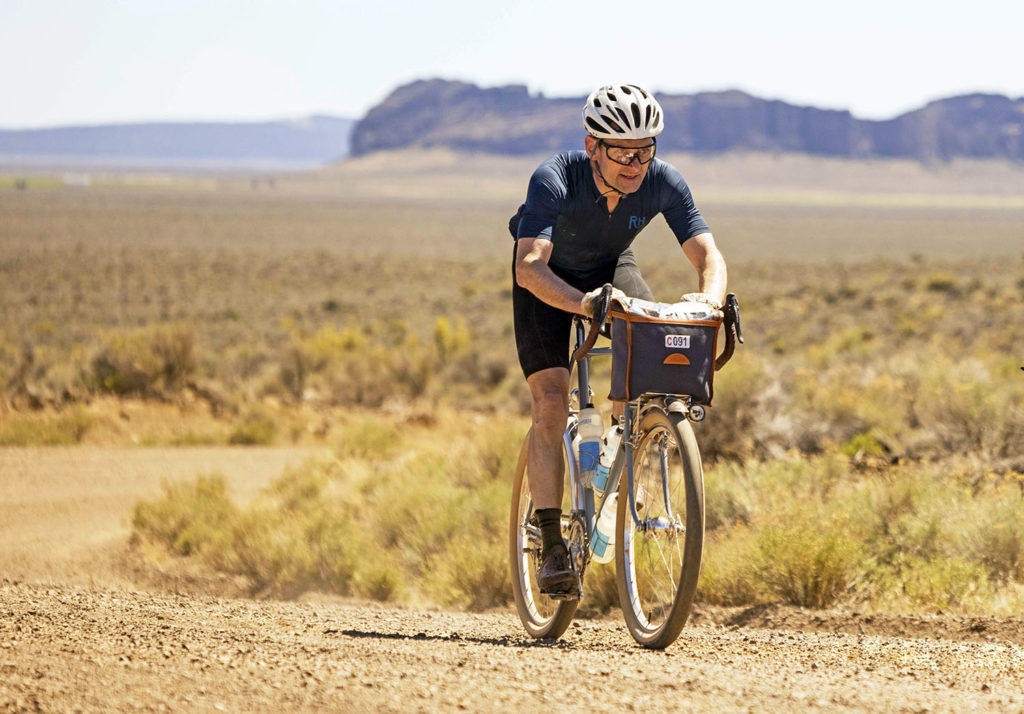
Oregon Outback FKT
When I rode an independent time trial (ITT) over the 364-mile (586-km) Oregon Outback, I ran 54 mm Extralight tires, inflated the tires to just 19 psi (1.3 bar). That’s much less than our pressure calculator suggests: For my weight and 54 mm tires, 26 psi (1.8 bar) is the ‘soft’ pressure.
The ultra-soft tires floated over the ultra-rough roads and trails of the Outback. They also didn’t hold me back on the 30% of the course that is paved. Having tires that rolled so well on all surfaces was key to setting the FKT (Fastest Known Time) of 26:13 hours. The low pressure worked fine for me, because this time trial was a steady effort at moderate power. If I had to sprint, I would have run a higher pressure.
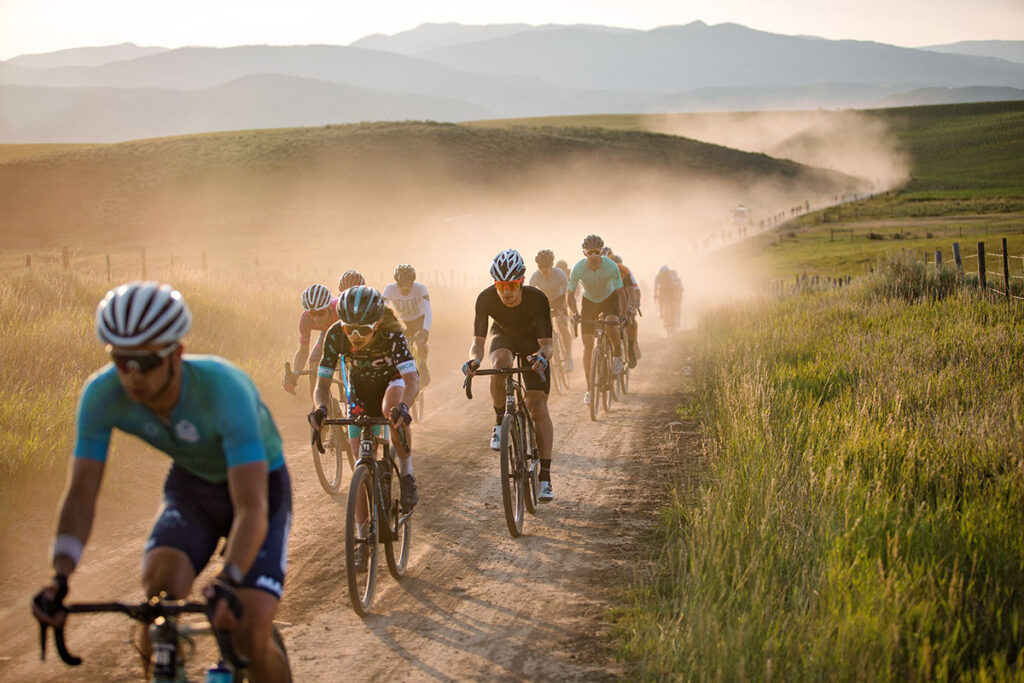
Conclusion
The science is clear: Wider tires and lower pressures have less rolling resistance. Supple casings make a bigger difference than anything else. Tread patterns don’t matter on dry gravel. Neither does wheel size. That’s the simple part, but there’s more: the physiological factors of how rider, bike, tires and road surface interact.
Optimizing your power output is even more important than minimizing resistances. A narrow tire may have a little more rolling resistance, but if its greater stiffness allows an ultra-strong racer to put out more power, they will be faster. (You can also run wide tires and just inflate them a bit harder.) This also means that following the examples of top racers may not work for the rest of us. A bike setup that works for the likes of Ted King may not work for me. And my setup for the Oregon Outback time trial, with ultra-squishy tires, would not be good for a top racer in a sprint.
In practice, it makes sense to start by minimizing resistances, before adjusting to get the feel of the bike you want and need. Here is a summary of this strategy:
- Start with the widest tire that fits on your bike.
- Use the most supple casing you can get away with, given the terrain and your riding style.
- Don’t worry about tread patterns. When in doubt, choose a dual-purpose knobby.
- Adjust tire pressure to fine-tune how your bike feels. When in doubt, run lower pressures.
- Think in terms of handling and bike feel when choosing your wheel size.
- On the road, don’t think about your bike. Focus on the ride!
Viewed like that, it’s really quite simple. And that’s the beauty of cycling (and science): It doesn’t need to be complicated.
More Information:
- Gravel Myths (1): Too much tire?
- Gravel Myths (2): Smaller Knobs Roll Faster?
- Gravel Myths (3): Wide Tires Need Wide Rims?
- Gravel Myths (4): 700C Wheels Roll Faster?
- Gravel Myths (5): Side Knobs for Cornering Traction?
- Aerodynamics of gravel bikes
- Results of Bicycle Quarterly’s tire tests
- Our book The All-Road Bike Revolution explores how bicycles really work.
- Supple tires in the Rene Herse program
- Rene Herse Tire Pressure Calculator
Photo credits: Linda Guerrette (all except: Ted King at Unbound by Andy Chasteen; Ted King at Rift Iceland by unknown;Ted King at SBT GRVL by Wil Mathews/SBT GRVL; knobby tire in snow by Natsuko Hirose; Jan at Oregon Outback by Rugile Kaladyte)


